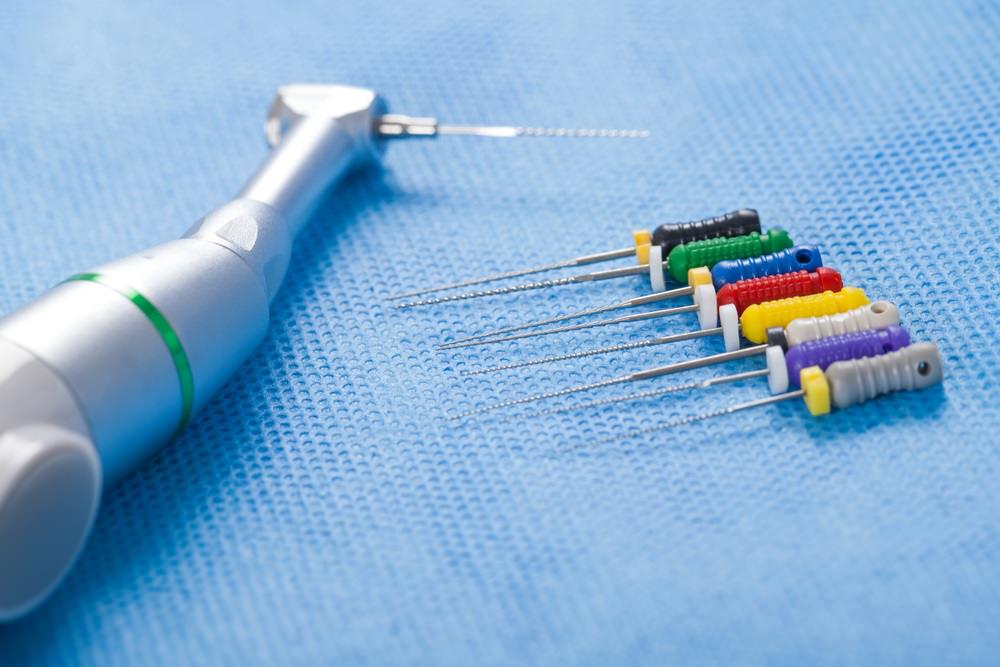Tooth Pain after Root Canal
Root Canal is perhaps one of the most common dental procedures, effectively restoring millions of teeth to health every year.
Generally, root canal therapy is a pain-free procedure.
However, like most medical procedures, some degree of discomfort or pain is to be expected; either prior, during or after the treatment.
This article is for everyone who has recently had this endodontic treatment done, and is experiencing some level of discomfort or pain.
By the end of this post, you’ll know what exactly to expect post-procedure, what degree of discomfort is normal, and when would be the right time to give your doctor a ring.
All About Root Canals
Before we get into the nitty-gritty of what causes root canal pain, it’s important to understand how this endodontic treatment works and what it actually is.
Here are a few important things to know about the Root Canal.
Root Canal Repairs: Pulp Damage
Inside the hard upper layers of our teeth is a soft tissue called the Pulp.
This tissue consists of blood vessels, nerves, and connective tissue, making it responsible for nourishing the teeth with nutrients.
Sometimes, the hardened, outer layer of the teeth is damaged, and the pulp is exposed.
This damage may be due to an injury, a genetic predisposition or a medical condition.
When this damage to the pulp occurs, a painful abscess may form as a consequence.
Additionally, your teeth will grow more sensitive to hot and cold –this is your body’s way of sending a red signal to your brain.
Root Canal Procedure
The following is a general Root Canal procedure that every dentist who trained can perform.
- Step I: Your dentist will numb the affected area, and then surgically drill an opening in the damaged tooth. Sometimes, the nerves are so weak that anaesthesia may not even be necessary – however, most dentists will go ahead with pain relieving practices to make the patient more at ease.
- Step II: The damaged tissue is removed, along with all the bacteria, decayed nerves and related debris from inside the tooth.
- Step III: The canals are cleaned with special tools called Root Canal Files. These files are available in different diameters and are used to scrub every nook and cranny of the inner-tooth. The area is kept free of saliva during the procedure, but periodic flushing of water and sodium hypochlorite is used to flush away all debris.
- Step IV: After cleaning, the now hollow cavity of the tooth, where the infected tissue used to be, is filled up with a replacement filling. This is a temporary filling and will be removed once the area has healed enough for the final steps of the procedure.
- Step V: The opening created is sealed. This step may occur at any time after the cleaning, from right-after-cleaning to a week later. The period between cleaning and sealing varies depending on the health of the infected teeth –if there is an infection, your dentist will wait for the infection to clear before sealing the tooth. In these cases, the temporary filling mentioned above is used to keep out water and food particles.
- Step VI: Depending on the situation and the patient’s needs, the dentist may choose to end the procedure here or continue. A Dental Crown or post may need to be placed to prevent future damage and injury.
X-Rays
One way to determine the effectiveness of a completed root canal treatment is by comparing pre and post-op X-rays.
This comparison will reveal the nature of bone loss in the teeth and the degree of regeneration.
It’s important to keep track of this semi-regularly, in order to avoid future complications.
I had a Root Canal, Why does it still hurt?
Generally, root canals have high success rates, but some post-op discomfort is to be expected.
Even if complications do not arise, a certain degree of sensitivity is inevitable – especially when chewing on food.
Expected Pain
The recovery period of a root-canal is somewhere between a couple of days to a couple of weeks.
Some pain and inflammation are normal, especially during the first few days, usually going away on its own.
The following is the expected, and normal of discomfort you may experience:
- Mild to moderate pain for a few days post-root canal, especially once the anesthesia starts to wear off, is normal. This may last for 24 to 48 hours.
- Some swelling is also normal – this is primarily because your body’s immune system is responding and adjusting to the filling that the root canal left behind. The surgical nature of the procedure is also very hard on the surrounding teeth and gums.
- Tenderness and sensitivity around the muscles of the jaw area.
Anything beyond this is a red alert. If the dull aches seem to be getting more painful rather than fading away, it might be time to revisit your doctor for another assessment
Post Treatment Care
Some tips to help reduce the pain and discomfort include:
- Avoid munching on hard or crunchy food during the healing period –failure to do so will result in more pain. Additionally, reduce the amount of sugar that you consume.
- Quitting smoking helps as well
- Much of the discomfort is easily treatable by over-the-counter painkillers. However, you might want to check with your doctor before taking these medications, as well as any other that you may also be taking so the doctor can advise you on their interactions with each
- Brush your teeth at least twice a day, with a soft toothbrush, using gentle circular motions to brush your teeth.
When to See a Dentist
Root Canals help to reduce your oral pain, and whatever mild degree of discomfort you experience post-op should not last very long.
Any pain beyond a certain point may warrant additional cleaning of the canals or other dental procedures.
A visit to the dentist will be in order if your pain and symptoms are along the lines of the list below:
- If the pain lasts longer than three days and is recurring
- Increased and visible swelling inside and outside the mouth
- Allergic reactions to medications
- No relief despite the use of medication
- Loose crown or filling
- Pre-Root Canal symptoms resurfacing
Causes of Post-Root Canal Pain
Because of how common the Root Canal procedure is, complications are rare –but they are not unheard of.
Some of the things that can go wrong post-op are as follows:
1. Gum Inflammation
Swelling of the gums after a root canal treatment, particularly one that was stretched out over a couple of months, means reduced healing.
If the swelling persists or the discomfort associated with it increases, you should revisit your dentist for another examination. There may be structural problems like a cracked tooth or vertical root fracture.
If not, then the persistent infection may be symptomatic of canal spaces that may have been missed, require more filling or need to be cleaned further.
The swelling may also be a sign of coronal leakage. Either way, only your dentist can fix it.
2. A “High Bite”
This means a filling that has been filled too high, and therefore is pressing down on the tooth a lot harder than it should.
This extra pressure adds a lot of extra stress on to the ligaments and tissues surrounding your teeth, causing pain and discomfort.
For this, the filling must be removed, or adjusted by your dentist.
3. Continued Infection
Sometimes the tooth that has been treated can get infected following the procedure, especially if the initial cause of root-canal treatment was an infection.
It’s usually caused by inadequate cleaning, which leads to accumulation of bacteria – 25 different kinds of bacteria to be exact.
This infection is not detected by X-rays and is the most common patient complaint after a root-canal procedure.
4. Fractured Tooth
This is called a Cracked Tooth Syndrome, and it can be identified by pain that comes and goes when you press upon the tooth, either while eating or biting down.
If left untreated, the tooth may loosen, making it possible for the patient to feel the crack when pressing with their tongue.
Your dentist will use a dental explorer to feel for cracks and irregularities around the gum line or use a fibre optic light for diagnosing tiny cracks.
Unlike bone fractures, cracks and fissures in the teeth do not heal by themselves.
However, your dentist’s preferred treatment for this issue will be fairly straightforward – filling up the cracks with resin or glue.
5. Nerve Sensitivity
Generally, there should be no lasting sensitivity to temperature after a root canal, and any discomfort should not last for more than a week.
Dentists recognise that dental procedures can be very painful for patients and equally traumatising for the teeth.
Much of the discomfort is easily treatable, with dentists prescribing readily available, over-the-counter painkillers.
You might want to check with your doctor before taking any painkillers though and tell them about any other medication that you may also be taking.
Keeping your dental health practitioner updated on such matters can help them advise you on the medications and their interactions with each other.
6. Going Against Dentist’s Orders
Chewing hard food, smoking, and not returning for follow-ups appointments may cause pain to resurface.
Patients post-root canal are given strict orders to maintain proper oral hygiene and avoid munching on hard or crunchy food during the designated healing period.
Extra pressure on the teeth will induce more pain as the teeth and gums are still healing from the procedure. Additionally, dentists will direct their patients to consume less sugar while smokers are told to quit their habit entirely.
Failing to follow your dentist’s directions may result in pain, tenderness, sensitivity and infection, aggravating an already sensitive situation
How Will Your Dentist Address Your Pain?
A Root Canal treatment saves the roots of your teeth by eliminating infections and removing debris from canal spaces.
After the treatment, it is important to monitor the outcome biannually. You can do this by comparing post and pre-op X-rays, or by following up with your dentist.
If your pain hasn’t subsided within the time frame indicated by the dentist, please give them a call.
Conclusion
Tooth decay is inevitable, but with proper oral care and treatment, a restored tooth can last a lifetime.
In the absence of natural nourishment from healthy Pulp, the teeth can become more predisposed to fracture and injury.
It’s important to maintain good oral health and visit the dentist regularly to reduce and mitigate all potential harm.
Additionally, semi-regular dental X-rays of your treated teeth and gums will help check for and track any bone loss in the teeth and the degree of regeneration.
This will help avoid future complications.
Root Canals are a fairly common procedure, and every dentist is trained and experienced in it.
Complications are rare, and when they occur, they are easily treatable. Just make sure you follow your dentists orders and take proper care of your oral hygiene before and after the procedure.
By Dr. V
Created at December 13, 2018, Updated at January 25, 2025





